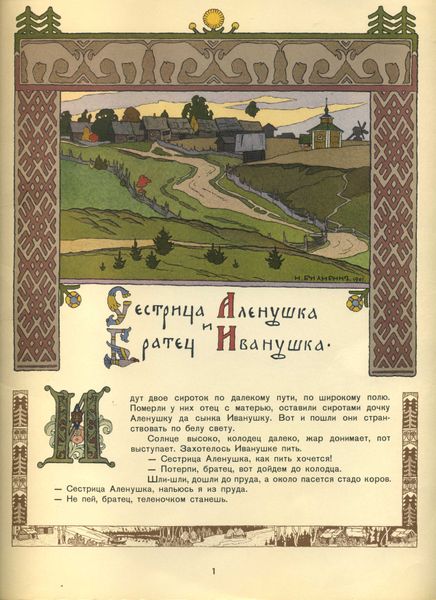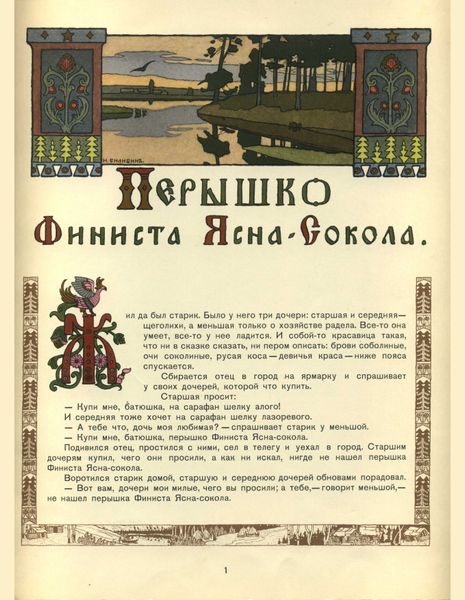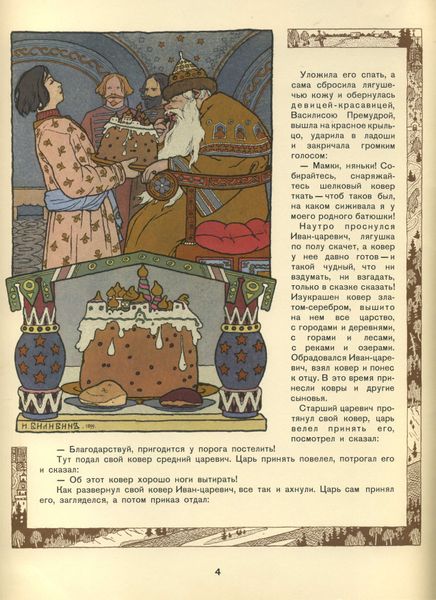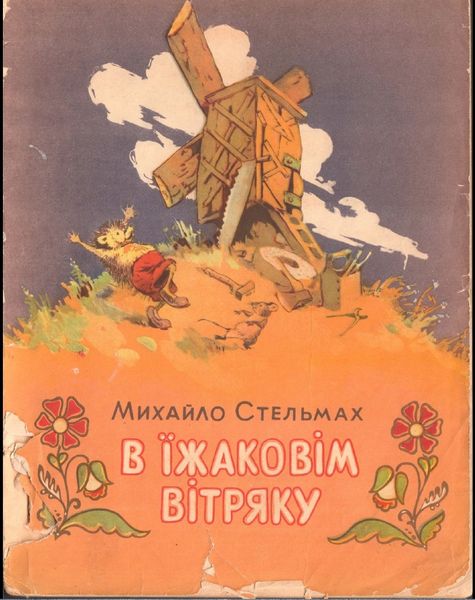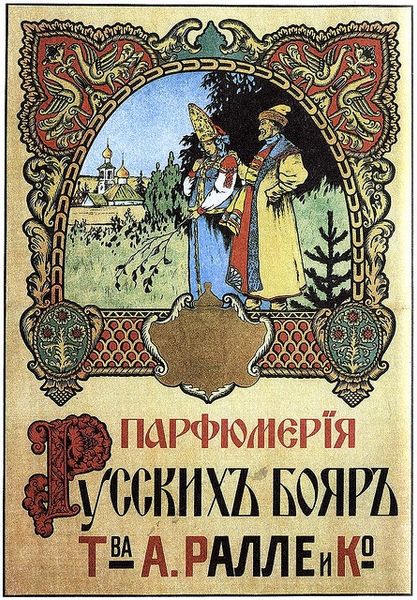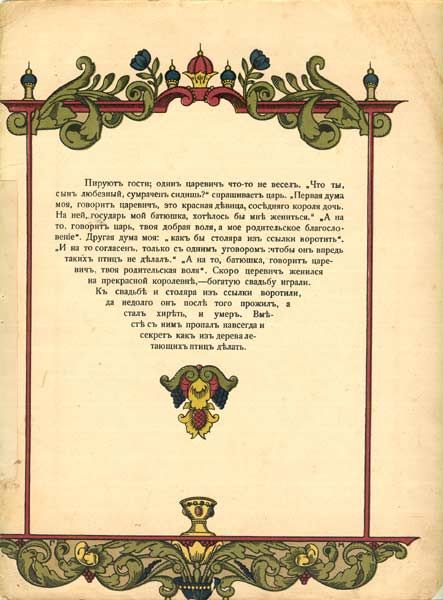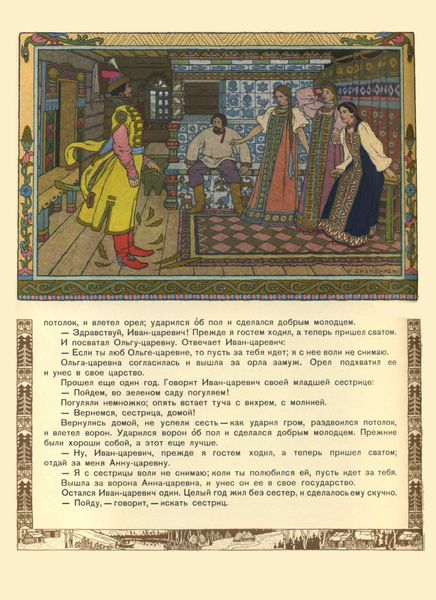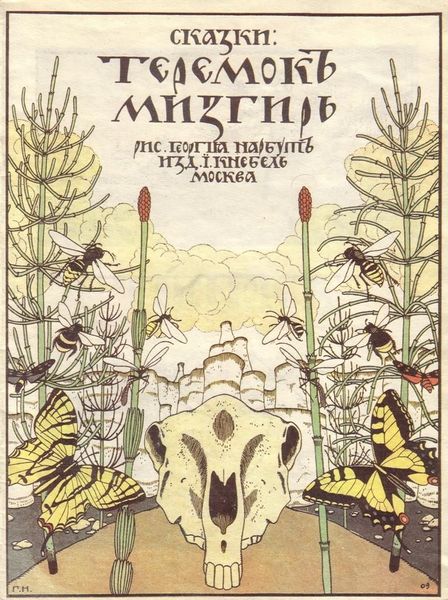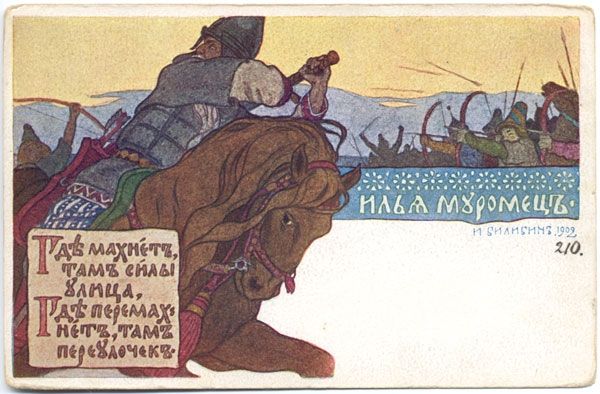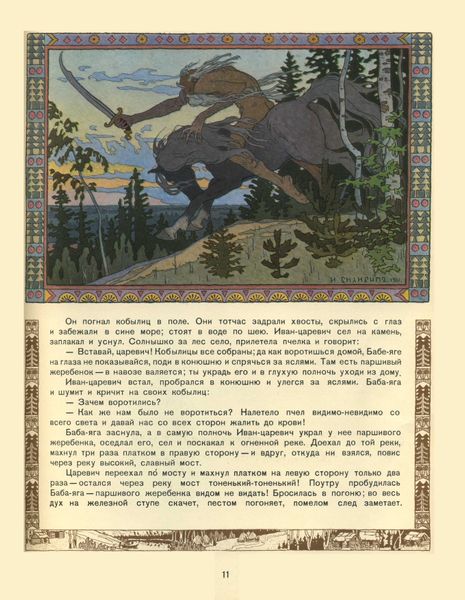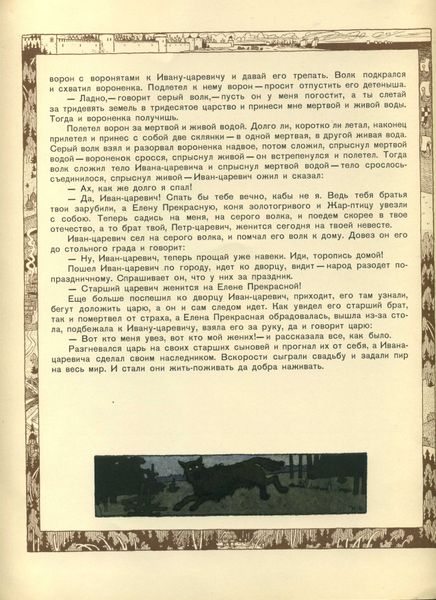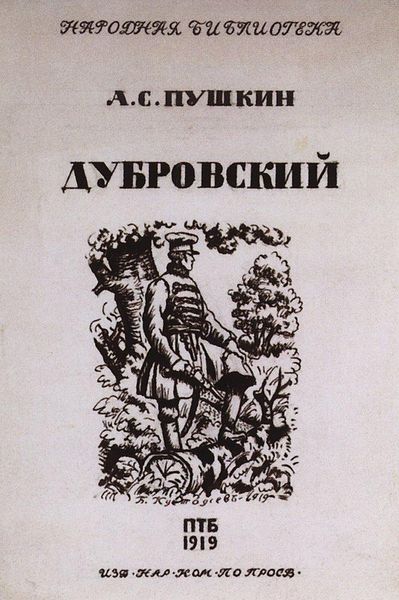
painting, print
#
narrative-art
#
animal
#
painting
# print
#
landscape
#
text
#
folk-art
#
geometric
#
mythology
#
symbolism
#
russian-avant-garde
#
miniature
Copyright: Public domain
Curator: Let’s discuss Ivan Bilibin’s "Illustration for the Russian Fairy Story 'The Frog Princess'," created in 1899. It's an intriguing blend of print and painting. Editor: My immediate impression is one of serene artifice. The colors are muted yet harmonious, and the composition is remarkably balanced despite the overt narrative. It evokes a feeling of stylized calm, if that makes any sense. Curator: It does. Bilibin was deeply involved in reviving traditional Russian folk art. This piece is emblematic of the Art Nouveau movement's interest in decorative arts, and his effort to construct an idealized vision of Russian history. The symbolism employed resonates with national identity. Editor: The geometric patterns interwoven with stylized flora and fauna lend themselves to your point about decorative art, particularly framing the central scene. It creates a flattened, almost Byzantine pictorial space. What do you make of the figures? Curator: They’re distinctly Russian in their costume, but also universal in their representation of a certain archaic heroic type. Their positioning feels somewhat stilted, but that’s almost certainly a conscious choice—referencing traditional icon painting and folk art styles prevalent in the Russian Avant-Garde movement. This reflects a time of nationalism as an independent art from Russia developed. Editor: Interesting that you mention their heroic depiction when their quest in the story comes across so foolish, even farcical, to contemporary readers. I keep circling back to how deliberate everything feels, especially given that this is an illustration for a fairy tale. It's not purely functional; it's aesthetically assertive. Curator: Exactly. Bilibin saw himself as preserving a visual language, one threatened by industrialization and Western cultural influence. It became an important emblem of the folk-art. Editor: A preservation effort that, ironically, is itself a highly constructed image, a nostalgic imagining rather than a documentary. Curator: Precisely. The visual is as meaningful, maybe even more meaningful, than the accompanying text it was printed with. Editor: Well, that’s something for visitors to mull over—the captivating interplay between tradition, narrative, and artistic intention.
Comments
No comments
Be the first to comment and join the conversation on the ultimate creative platform.
